Thomas Ruyant régénéré !
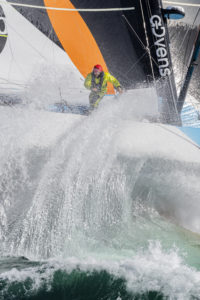 De l’eau, de l’air, du vent, du soleil, l’éclat des îles de Bretagne, les sourires de ses enfants… Thomas Ruyant a, tout l’été, fait le plein de saveurs, de paix, de contemplations océanes, avant d’entrer dans la frénésie du Vendée Globe. Fort de tant d’images, il repousse ces moments inéluctables où la pression de ce tour du monde annoncé hors catégorie s’emparera de lui. Le plus tard possible. Toutes les équipes de TR Racing et de son partenaire Advens y veillent, bichonnant son plan Koch-Finot Conq VULNERABLE jusque dans les détails les plus singuliers, pour donner à leur Dunkerquois de skipper ce capital confiance déterminant à l’approche d’un gigantesque et planétaire défi. Pour son troisième départ des Sables d’Olonne en solitaire et en circumnavigation, Ruyant s’appuie sur le savoir-faire unique de son équipe, qui lui a donné toutes les clés pour sentir, ressentir et ingérer les moindres soubresauts du bateau de toutes ses aspirations marines. En cette fin d’été, Thomas Ruyant et son équipe glissent imperceptiblement dans le long tunnel des dernières semaines d’avant Vendée Globe, un tunnel dont il lui tarde tant d’émerger le 10 novembre prochain, peu après 13 heures, enfin seul, libre et heureux.
De l’eau, de l’air, du vent, du soleil, l’éclat des îles de Bretagne, les sourires de ses enfants… Thomas Ruyant a, tout l’été, fait le plein de saveurs, de paix, de contemplations océanes, avant d’entrer dans la frénésie du Vendée Globe. Fort de tant d’images, il repousse ces moments inéluctables où la pression de ce tour du monde annoncé hors catégorie s’emparera de lui. Le plus tard possible. Toutes les équipes de TR Racing et de son partenaire Advens y veillent, bichonnant son plan Koch-Finot Conq VULNERABLE jusque dans les détails les plus singuliers, pour donner à leur Dunkerquois de skipper ce capital confiance déterminant à l’approche d’un gigantesque et planétaire défi. Pour son troisième départ des Sables d’Olonne en solitaire et en circumnavigation, Ruyant s’appuie sur le savoir-faire unique de son équipe, qui lui a donné toutes les clés pour sentir, ressentir et ingérer les moindres soubresauts du bateau de toutes ses aspirations marines. En cette fin d’été, Thomas Ruyant et son équipe glissent imperceptiblement dans le long tunnel des dernières semaines d’avant Vendée Globe, un tunnel dont il lui tarde tant d’émerger le 10 novembre prochain, peu après 13 heures, enfin seul, libre et heureux.
Un break salutaire et bienfaisant
Les vacances idéales de Thomas Ruyant ? En bateau bien sûr ! Oh, pas sur son IMOCA VULNERABLE, demeuré sagement à Lorient aux bons soins des spécialistes de TR Racing, mais sur un voilier de plaisance parfaitement adapté pour permettre au prétendant au 10ème Vendée Globe de rester « connecté tout en déconnectant. » « En croisière, en famille, avec canne à pêche et maillot de bain, entre île d’Yeu et Glénans, j’ai totalement « coupé du bureau » muse Thomas. Ces 10 dernières années ne lui ont en effet guère offert l’occasion de vraiment souffler, d’arrêter la certes passionnante mais si prenante spirale du montage, aux côtés d’Alexandre Fayeulle et de Thomas Gavériaux, d’une équipe de course au large à deux bateaux performants, porteuse des messages et des visions sociétales de son partenaire Advens. « TR Racing est une équipe solide, avec à chaque poste de responsabilité, de grands professionnels » poursuit Thomas. « J’ai ainsi pu m’offrir un véritable break de 5 semaines avant la douce folie du Vendée Globe. »
La machine de ses rêves
Serein, reposé, motivé comme jamais, il a en début de semaine dernière retrouvé son VULNERABLE au moment de sa mise à l’eau, consécutive à un profond chantier estival. « Un gros travail de fiabilisation sur tous les postes essentiels du bateau a été réalisé. Nous ne sommes plus en phase de développement, et j’ai la conviction d’avoir entre les mains la machine ultime, celle dont j’ai rêvé, et que nos équipes ont parfaitement optimisé dans la perspective d’un tour du monde sans escale. Le prochain vainqueur du Vendée Globe sera le marin qui aura connu le moins de problèmes techniques. J’ai la chance, grâce à Advens, d’avoir à bord les outils pour disposer en instantanée d’une image précise de ce que vit le bateau, en termes de pression, de charges. A moi de ne pas me mettre dans le rouge, de naviguer en finesse, en étant rapide quand il faut, à l’instar de ce que j’ai réalisé en établissant ce record des 24 heures en décembre dernier lors de « Retour à la base » (539,94 milles, soit 22,49 noeuds de moyenne ndlr). »
Le Vendée Globe, dans la dynamique de Paris 2024…
Dégagé de toute tension, Thomas Ruyant aborde avec méthode les semaines qui le séparent des impératifs Sablais. « Nous allons valider tous les travaux effectués cet été par des navigations thématiques » explique-t’il. Validation des foils, des voiles, ajustement des réglages, mais aussi stage à Port La Forêt et sessions météos avec Marcel van Triest sont au menu des prochains jours, avant l’intéressant interlude du Défi Azimut (du 10 au 15 septembre à Lorient) … « On va jouer à la maison !» poursuit Thomas, « On va recevoir nos amis et partenaires, pour une belle fête à Lorient, avec des confrontations toujours intéressantes avec la concurrence. C’est l’occasion aussi de remettre toute notre équipe dans le bain technique et événementiel des impératifs qui nous attendent aux Sables d’Olonne pour le départ du Vendée Globe. Il n’y a pas de pression particulière, autre que notre volonté de toujours bien faire les choses. » La pression va monter avec l’arrivée de l’automne, et une saine émulation va s’installer. « Je sais que j’ai un statut à assumer, et j’ai désormais l’expérience nécessaire pour y faire face. Je pense que le Vendée Globe peut s’inscrire dans cet engouement, cette fraternité, cette envie d’être ensemble observés en France durant les Jeux. J’ai grand hâte ! Vivement le départ ! »

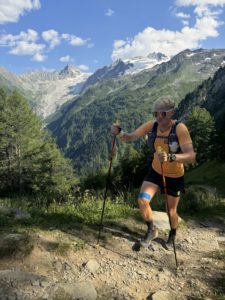 Maxime Sorel, qui a gravi l’Everest en 2023, 10ème du dernier Vendée Globe, au départ du prochain à bord de V and B – Monbana – Mayenne le 10 novembre, prendra part vendredi à l’ultra Trail CCC, la petite sœur du fameux UTMB entre Courmayeur et Chamonix soit 101 km et 6 050 mètres de dénivelé. Le navigateur – aventurier, compétiteur dans l‘âme, compte mettre 18 heures pour aller au bout de cette course à pied unique et parmi les plus prestigieuses au Monde.
Maxime Sorel, qui a gravi l’Everest en 2023, 10ème du dernier Vendée Globe, au départ du prochain à bord de V and B – Monbana – Mayenne le 10 novembre, prendra part vendredi à l’ultra Trail CCC, la petite sœur du fameux UTMB entre Courmayeur et Chamonix soit 101 km et 6 050 mètres de dénivelé. Le navigateur – aventurier, compétiteur dans l‘âme, compte mettre 18 heures pour aller au bout de cette course à pied unique et parmi les plus prestigieuses au Monde. Voici quelques retombées générées ces derniers mois par TB Press et son équipe :
Voici quelques retombées générées ces derniers mois par TB Press et son équipe :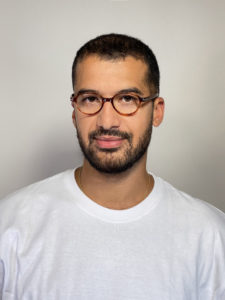 Pour la 17ème édition de l’opération de mécénat Atout Soleil, le fonds de dotation « Nos Épaules et Vos Ailes », en collaboration avec GPMA, Generali et La Médicale, a lancé un appel à projets baptisé « Génération Zéro Addiction ». Il vise à soutenir les associations qui œuvrent pour prévenir les conduites addictives, qui aident les jeunes à se soigner et à se libérer durablement de leurs addictions, et qui apportent un soutien et des solutions à leurs familles.
Pour la 17ème édition de l’opération de mécénat Atout Soleil, le fonds de dotation « Nos Épaules et Vos Ailes », en collaboration avec GPMA, Generali et La Médicale, a lancé un appel à projets baptisé « Génération Zéro Addiction ». Il vise à soutenir les associations qui œuvrent pour prévenir les conduites addictives, qui aident les jeunes à se soigner et à se libérer durablement de leurs addictions, et qui apportent un soutien et des solutions à leurs familles.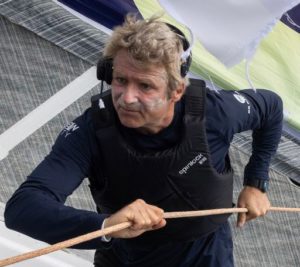 Vainqueur à Saint-Malo, troisième le week-end dernier à Pornichet – La Baule, l’équipage de Solidaires En Peloton est entré dans sa saison 2024 positivement jouant quasi toujours aux avant-postes. Thibaut Vauchel-Camus, leader en 2023, est plus que jamais décidé à imprimer sa marque en 2024 aussi bien sur les parcours construits des Ocean Fifty Series qu’au grand large. Objectif Route des Terre-Neuvas désormais dont le départ sera donné le 17 août de Saint-Pierre-et-Miquelon ! Axelle Pillain et Yann Eliès embarqueront avec Thibaut pour cette transat express en direction de la baie de Saint-Brieuc et Saint-Quay-Portrieux.
Vainqueur à Saint-Malo, troisième le week-end dernier à Pornichet – La Baule, l’équipage de Solidaires En Peloton est entré dans sa saison 2024 positivement jouant quasi toujours aux avant-postes. Thibaut Vauchel-Camus, leader en 2023, est plus que jamais décidé à imprimer sa marque en 2024 aussi bien sur les parcours construits des Ocean Fifty Series qu’au grand large. Objectif Route des Terre-Neuvas désormais dont le départ sera donné le 17 août de Saint-Pierre-et-Miquelon ! Axelle Pillain et Yann Eliès embarqueront avec Thibaut pour cette transat express en direction de la baie de Saint-Brieuc et Saint-Quay-Portrieux.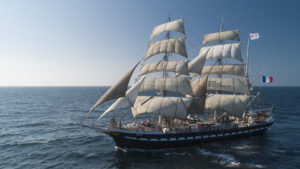 C’est devenu une tradition, une escale « phare » pour le Belem et la Fondation Belem Caisse d’Epargne. Le trois-mâts sera à Bordeaux pour « Bordeaux fête le vin » du 27 au 30 juin. Il arrivera le 26 juin à 11h30 sur zone et repartira, direction Saint-Nazaire, le 1er juillet à 14h00. Entre temps, les 28, 29 et 30 juin de 11h15 à 17h30, il sera ouvert au grand public via un pass payant, amarré au Ponton d’honneur, face au pont de pierre.
C’est devenu une tradition, une escale « phare » pour le Belem et la Fondation Belem Caisse d’Epargne. Le trois-mâts sera à Bordeaux pour « Bordeaux fête le vin » du 27 au 30 juin. Il arrivera le 26 juin à 11h30 sur zone et repartira, direction Saint-Nazaire, le 1er juillet à 14h00. Entre temps, les 28, 29 et 30 juin de 11h15 à 17h30, il sera ouvert au grand public via un pass payant, amarré au Ponton d’honneur, face au pont de pierre.